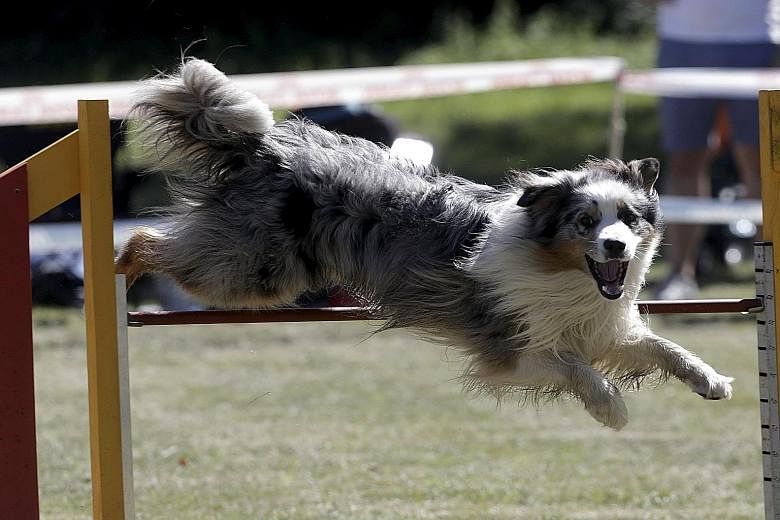Among the deep and intriguing phenomena that attract intense scientific interest are the birth and death of the universe, the intricacies of the human brain and the way dogs look at humans.
That gaze - interpreted as loving or slavish, inquisitive or dumb - can cause dog lovers to melt, cat lovers to snicker, and researchers in animal cognition to put sausage into containers and see what wolves and dogs will do to get at it.
More than one experiment has made some things pretty clear: Dogs look at humans much more than wolves do; wolves tend to put their nose to the Tupperware and keep at it.
This evidence has led to the unsurprising conclusion that dogs are more socially connected to humans and wolves more self-reliant.
Once you get beyond the basics, however, agreement is elusive.
In order to assess the latest bit of data, published in Biology Letters recently by researcher Monique Udell at Oregon State University, some context can be drawn from an earlier experiment that got a lot of attention over a decade ago.
In a much-publicised paper in 2003, Dr Adam Miklosi, now director of the Family Dog Project, at Eotvos Lorand University in Budapest, described work in which dogs and wolves which were raised by humans learnt to open a container to get food.
Then they were presented with the same container, modified so that it could not be opened.
Wolves persisted, trying to solve the unsolvable problem, while dogs looked back at nearby humans. At first glance it might seem to a dog lover that the dogs were brilliant, saying, in essence: "Can I get some help here? You closed it; you open it."
But Dr Miklosi didn't say that. He concluded that dogs have a genetic predisposition to look at humans, which could have been the basis for the intense but often imperfect communication that dogs and people engage in.
Assistant Professor Udell decided to turn the experiment around and give the wolves and dogs a task that they could solve, if they tried.
She also put a food treat in a container for her test.
The difference, she said, was that "the animals could get it open. They just had to exert themselves".
The wolves persisted and solved the problem. The dogs, in both groups, quickly looked back at the humans.
She interprets her results as showing that the findings of the earlier experiment are "not evidence of advanced cognitive ability", and that the different approaches to problem solving are not related to cognitive ability at all.
But Dr Miklosi said in an e-mail that Prof Udell had created "a huge straw man" and that this was not a claim he made. "There is not much about cognition in this test."
Dr Brian Hare, an evolutionary anthropologist and a specialist in canine cognition at Duke University, said in an e-mail that he thought the research simply confirmed a well-known behaviour, "the looking-to-humans phenomenon".
He emphasised that intelligence is not a simple quality that can be compared in different species.
That might seem to settle the matter: Dogs tend to look at humans, wolves tend to rely on themselves more, and it is not about smarts.
But there is still the question of the reason for this difference.
Dr Miklosi found a genetic predisposition on the part of dogs to look at humans.
Professor Clive Wynne, director of the Canine Science Collaboratory at Arizona State University and Prof Udell's former PhD adviser and frequent collaborator, said that there is certainly a genetic contribution, but that a brief note in Prof Udell's recent paper intrigued him.
"It should be noted that in a pilot study, an eight-week-old puppy was able to open the puzzle box," Prof Udell wrote to emphasise that the dogs were clearly physically able to open the container.
But she added that perhaps older dogs had learnt not to try to solve problems. Even indulgent dog owners might want to discourage a pet's initiative and determination to open closed food containers.
"Dogs around people learn that they should not help themselves," Prof Wynne said, "but most of the world's dogs are not pets".
Most hang around where humans live, but scavenge garbage.
"You think they stop when they come to a box that's not open?" he asked. "I will go so far as to say that we teach our dogs to be stupid."
Prof Udell said she is pursuing a collaboration with researchers in India to study how feral dogs act in similar tests, which should suggest how important social conditioning is in such a test.
And that eight-week-old puppy? Well, there was more than one. But one of them was Prof Udell's border collie. Her name is Ember.
NEW YORK TIMES

